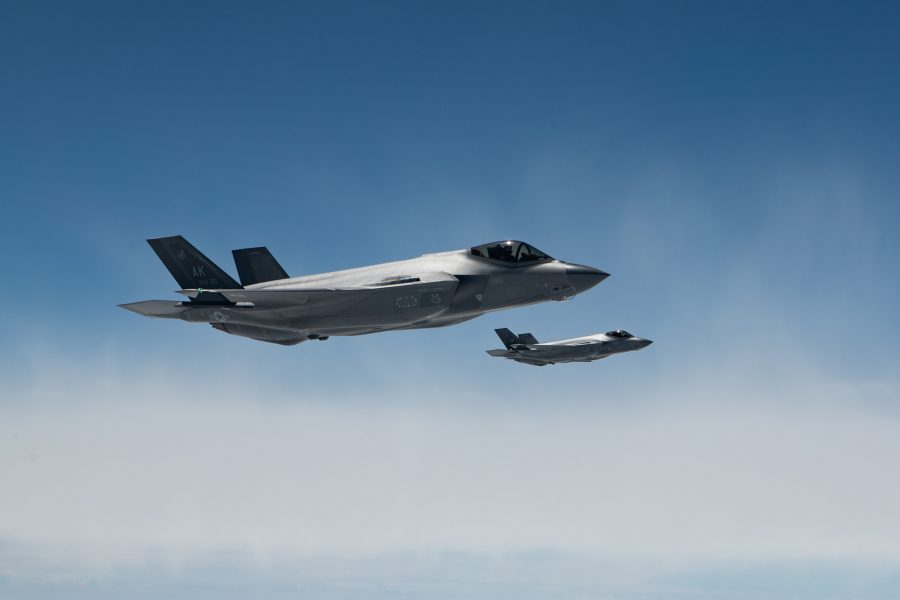AURORA, Colo.—Lockheed Martin expects that F-35 production will remain at about 156 aircraft per year through 2028, based on U.S. military services plans and the expected international market, according to company aeronautics executive vice president Greg Ulmer.
In an interview at the AFA Warfare Symposium, Ulmer said he foresees the 156 rate continuing “five-plus years into the future,” taking into account the recent international sales and interest, and U.S. Air Force, Navy and Marine Corps plans, which don’t call for a major increase in purchases.
Lockheed has done studies to assess what it would take to boost the rate—which would require more tooling, facilities and workforce—and provided that information to the F-35 Joint Program Office, but there’s been “no demand signal” to produce the jets faster, Ulmer said. The company has discouraged the Pentagon from fluctuating the rate of its requests, which would require a cycle of adding and laying off workforce or disrupting the regular flow of parts and materiel.
Deliveries of F-35s are on hold while testing continues with the Tech Refresh-3 hardware and software package, on which the Block 4 upgrade depends.
“Over the last few months, we began testing on the next software release for TR-3 both at [Patuxent River Naval Air Station, Md.] and Edwards Air Force Base,” Ulmer said. “We’re seeing improved performance with the TR-3,” with improved stability and “significant” new weapons capability, he said.
“We’re actually flying, now, the TR-3 software for production aircraft in Fort Worth,” he noted. “We’ve got 20 production flights under our belt, as we begin the acceptance process in Fort Worth, with the new software version entering production … this month.”
“I can’t tell you when we will close on the testing and … certification of TR-3. My belief is, it’ll be sometime this summer,” he added.
While testing is underway, jets produced with the TR-3 package are being stored until testing is complete, but Ulmer declined to say how many F-35s are being stored or where they are for security reasons. Government officials have pegged the number at about 60 airplanes.
Ulmer acknowledged that discussions are underway with the JPO that could allow the fighters to be delivered with something short of the fully-vetted hardware and software package, but he would not forecast a result.
“We’re working with the Joint Program Office to define what the deliverable key release will be, but I’m not going to get into specifics,” he said. “That’s for the JPO to decide and we’ll align to that requirement.”
He also declined to forecast when a deal will be struck on the next two production lots of F-35s. Lockheed submitted its proposal last fall, but discussions continue, he said. Ulmer has previously said the long streak of F-35 price decreases will likely end with the next lots, due to inflation and the greater complexity and capability in the new aircraft.
In the last few months, the Czech Republic ordered 24 F-35s; South Korea ordered an additional 20, and Israel has said it will add a third squadron of 25 jets.
